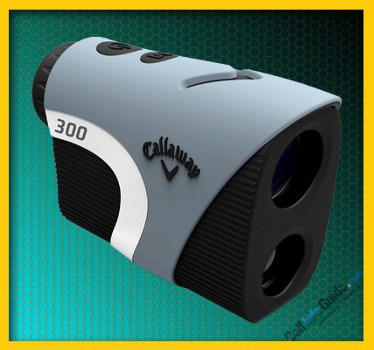


If you buy from a name brand like Callaway and you use it according to best practices (i.e. With rangefinders, user error accounts for most customer complaints. It gives us peace of mind, and quite a bit of added confidence, when we’re lining up a shot. When you’re locked in and you get the same reading a few times in a row, you know you’re good to fire.

One feature we really loved was the “birdie” feature that chirps when you lock onto a pin. Most courses put a reflector strip (or something similar) in the flag to make readings for rangefinders more accurate. We recommend zeroing in on the flag, rather than the pin, when firing. Then it will give you two numbers: one is the true distance, and the other is the distance adjusted for slope change. If you’re in birdie mode, it’ll chirp once you’ve locked on the target. To use the Callaway 300 Pro, we just aim it at the pin (or hazard, or bunker, or person in the fairway, etc.) and press the power button.
CALLAWAY 300 RANGE FINDER PRO
In the past, shaky hands have made it hard to get accurate, consistent readings with rangefinders, but the Callaway 300 Pro handled it with no problem. The first thing we noticed when using the rangefinder was how easy it was to lock in on a flag, even for those of us with shaky hands. We recommend doing the same - it isn’t easy to randomly click around to get what you want, and finding your settings on your own time will save you valuable time on the course. We read the two-page guide in its entirety and dialed in our preferred settings pretty much right away, before ever taking it out for a live round. The instructions for the Callaway 300 Pro were short, simple, and straightforward, as they should be for a device with only two buttons.


 0 kommentar(er)
0 kommentar(er)
